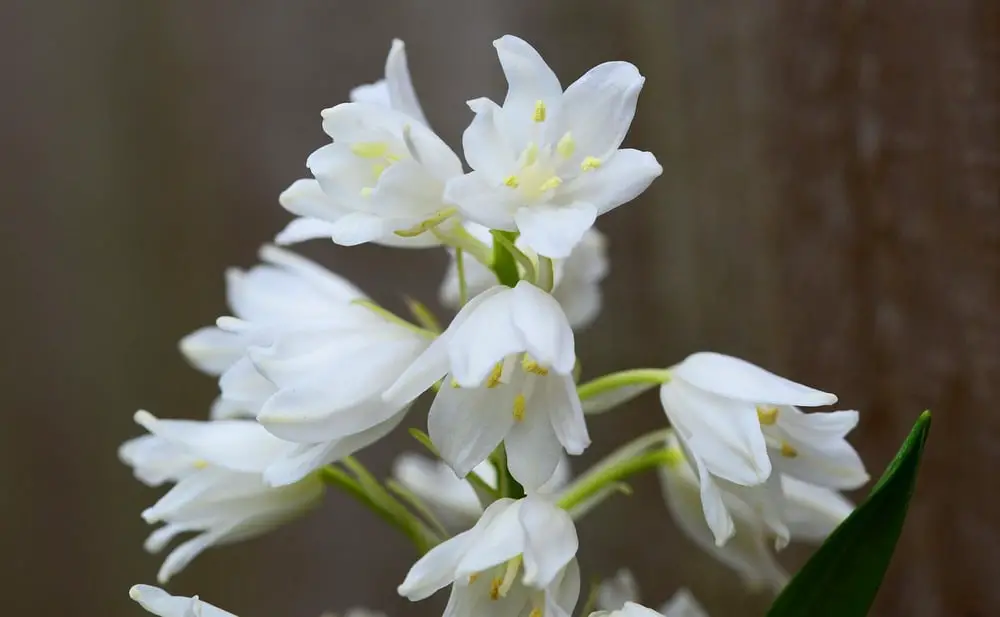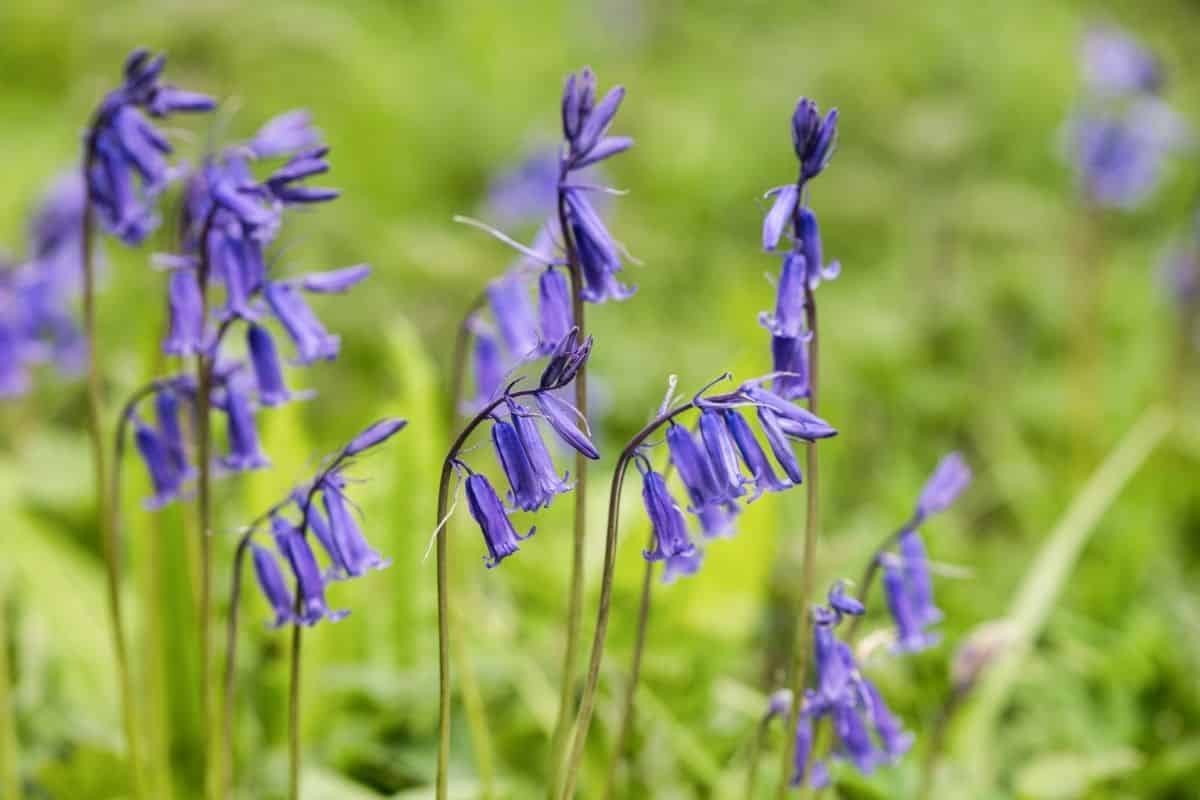There’s a whole new way to make a wish and it isn’t upon a star. Introducing a flower that holds mystic powers and meanings. The bluebell is surely one not to disappoint in awe and beauty!
The bluebells are not just any blue flowers. The bluebell flower inside has such sweet nectar that many flowers can’t compare. In fact, its meaning and symbolism behind each color are also just as delicate. For example, a white bluebell means humility while a blue bluebell symbolizes gratitude. Other floral colors such as pink bluebells represent playful joy while purple means jealousy.
History of Bluebell Flowers
The Bluebells can go by many other names especially in western Europe. In the British Isles, the flowers are known as the common bluebell while it can also be called harebells according to Scottish folk. It can go by other common names such as wild hyacinth, lady’s nightcap, crow’s toes, or cuckoo’s boots – all referring to the flower’s shape.
It originates from the genus Hyacinthoides of the Asparagaceae family – but some folks mistake it for the Lily family. The most common amongst the species of bluebells are the English bluebell, Bluebell wood, or Fairy flowers known as Hyacinthoides non-scripta and Spanish bluebell for the Hyacinthoides hispanica. The English Bluebells are native to Europe while the Spanish Bluebells are native to Spain and Portugal.
The bluebells were first described in 1578. It forms a beautiful cluster of blue flowers in the shape of a normal bell. The genus name Hyacinthoides derives from two Greek words. Hyacinthus means a flower of blue petals and oides means resembling or a likeness. Quite literally, the genus name refers to the petal’s blue color and bell shaped form.
These bell shaped flowers also has five to six petals and narrow leaves and it appears like tiny bells hanging from the central stem. Because of its drooping bell shape, Bluebells grow best under partial shade conditions in undisturbed areas such as forest floors and the best time to start planting these is during late spring. When in bloom, the flowers tend to lean toward one side and according to poet Gerard Hopkins – it was always toward pointing south.
Here are some other interesting facts about Bluebell woods or Bluebells in general. It is the favorite flower of bees and other pollinators because of its extra sweet honey. Unlike other flowers with yellow pollen, the Bluebell has blue or green pollen inside.
Symbolism of the Bluebell Plant
The merit of bluebells embodies the goddess of love and beauty, Aphrodite, and the image of the Blessed Virgin Mary. Given the flower’s mellow grace and calming shades, Bluebell flowers tend to symbolize gratitude, everlasting love, good fortune, and truth.
The bluebells also once had the symbolic meaning of being England’s national flower symbolizing a great generation and emerging power. The English folk also dedicated these flowers as the symbol of their patron St. George.

Meaning of the Bluebell Blossoms
Each bluebell color has a different yet special meaning. In the language of flowers, the bluebell meaning was associated with constancy, humility, and an enduring love. Some beliefs include the mystic wonder of the bluebells being delicacies to the folklore faeries. The flowers could also offer meanings of kindness and faithfulness of the human heart.
It is said that bestowing bluebells in bouquets to a friend implies that that person means the world to you or that you’re thinking of them! What a way to express your feelings, am I right? It can also denote someone’s sheer beauty. On the contrary to this, these flowers also emit feelings of submission and retirement. Probably to express one’s weary state!
Aside from these common meanings, the bluebell means other different things depending on its color. Here are some colors and meanings of bluebells.
What Does a White Bluebell Flower Mean?
White bluebells are known to depict the meanings of constancy and humility. It is for this reason that the flowers appear sweet and mellow in the fields.
What Does a Blue Bluebell Blossom Symbolize?
Blue Bluebells embody distinct symbols of grief and gratitude. The color blue can either be a pale blue or a deep blue. This floral color is usually a symbol of grief representing the metaphor of feeling down and blue.
What Does a Pink Bluebell Bloom Represent?
Lull pink bluebells denote instances of harmless mischief or simply playful joy. These are usually associated with the faeries who are known to be frisky and dubious at some time.
What Does a Purple Bluebell Flower Mean?
Expressions of apologies and jealousy are portrayed by purple bluebell fields. Alongside expressing one’s regret, purple bluebells can also mean forgiveness and moving forward.
What are the Symbolic Mythologies of Bluebells?
According to mythic stories, bluebells are believed to carry within their graceful flowers dainty faeries over to their processions under the moonlight. It is believed that making a selfless wish on these flowers would grant one their wish during the dawn of Spring.
But beware because not all Bluebells have good fairies in them – some can have dark fairy magic and even summon fairies that are actually witches turned into flowers! The Scottish folk believed that witches transform into these flowers and disguised themselves as a bad fairy. They said that these bad fairies would trap humans in the flowers forever!
In the scenario of romance, it is said that if one can turn bluebells inside out, you will luck with attaining the affection from your true love. Alternatively, if you want good fortune, all you have to do is pluck a bluebell and cast a rhyming enchantment. Better start keeping an eye out for these flowers then!

What is the Cultural Significance of Bluebells?
Old wives’ tales from the Scottish folk and the medieval times say that plucking bluebells is a sign of bad luck. The riddle behind this is that witches are believed to disguise themselves in the shape of these flowers and hide amongst the fields. Be extra careful when spotting a bluebell or you might just run into mischief!
In Victorian culture, these sweet smelling flowers were a means of expressing one’s thoughts and innermost feelings – usually of humility, gratitude, and love. Meanwhile, in Greek mythology the Bluebells scientific name was not what it is today.
Until the late 1900s, Bluebells were known as Endymion non-scriptus instead of the Hyacinthoides non-scripta. According to a Greek legend, Endymion was a mortal but unbelievably beautiful youth that was lulled to sleep by his lover, the moon goddess Selene. The goddess did this so that Endymion would never grow old and die.
Emily Bronte also mentioned bluebells in her work as a sweet flower that waves in summer air, its blossoms have the mightiest power. Others have also given this flower much importance. Here’s a fun fact about bluebells.
Bluebells are protected under the Wildlife and Countryside Act of 1981. The flower is an ancient woodland indicator meaning that where it grows is a special place. So this act states that it is illegal to dig up the plant or its bulb to plant in their own homes. Procuring these plants from the forests and selling it is also deemed as an illegal trade and punishable under the act. The act was put into place to avoid the flower’s habitat destruction.
What Do Bluebell Tattoos Mean?
Body art enthusiasts with bluebells as tattoos choose to embody their humility and gratitude in life and love. This delicate flower can portray their everlasting love for someone or something! A Bluebell tattoo can also indicate someone working on their self progress.
Uses of the Bluebell Plants
The Bluebells are habitually used as ornaments and decors in gardens and yards. Most people use it as accents on bouquets or cover designs in wide areas of woodland given the beauty of its flowers. It’s a unique flower that can be given during Mother’s day or loved ones on any day. Some even go as far as creating a memorable Bluebell ring with the flower preserved in precious stone.
During the Elizabethan era, the flowers’ sticky sap were used as a binding glue for books and paper. Meanwhile, Bluebell bulbs were crushed and used to make starch added onto ruffs of clothing collars and sleeves. Present-day uses of these flowers involve dyes or pigments and scent inspiration in many hand creams and body soaps.
Such beautiful flowers also have uses in folk medicine. Although there is no strong evidence for this, early folks believe that the plant has diuretic properties that can be used to stop bleeding. In modern medicine, bluebells are discovered to contain bioactive agents that can fight cancer.
Inadequate evidence of its medicinal value is available, although traditional medicine claims that the bulbs are used as a diuretic or styptic treatment. Presently though, these are now considered toxic for their glycoside contents and sap which causes dermatitis.
*image credit: swilphotos/depositphotos

